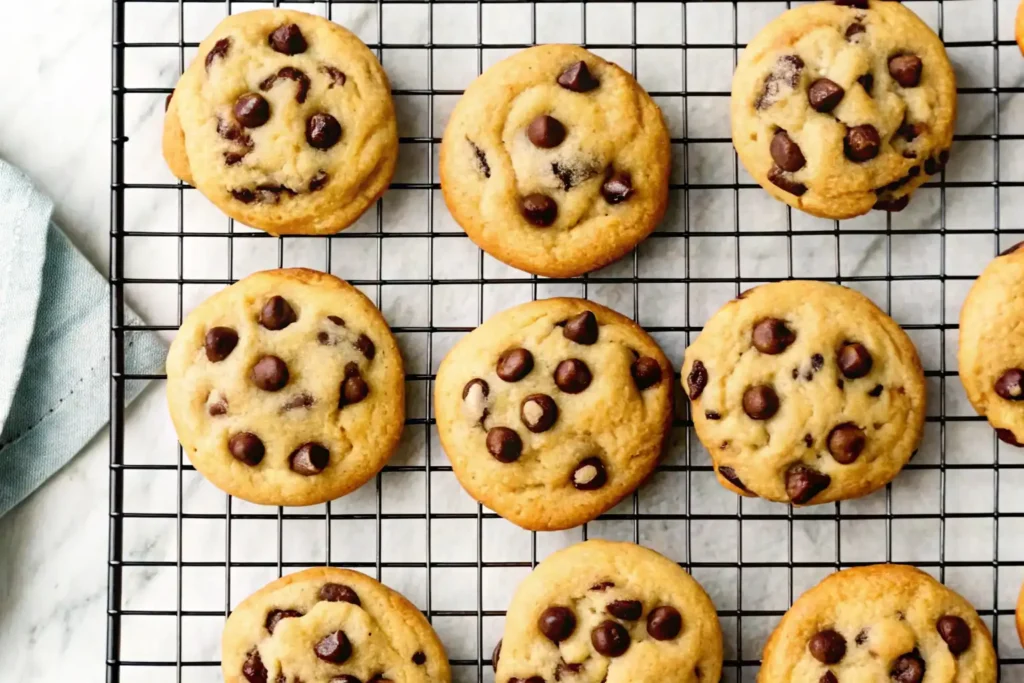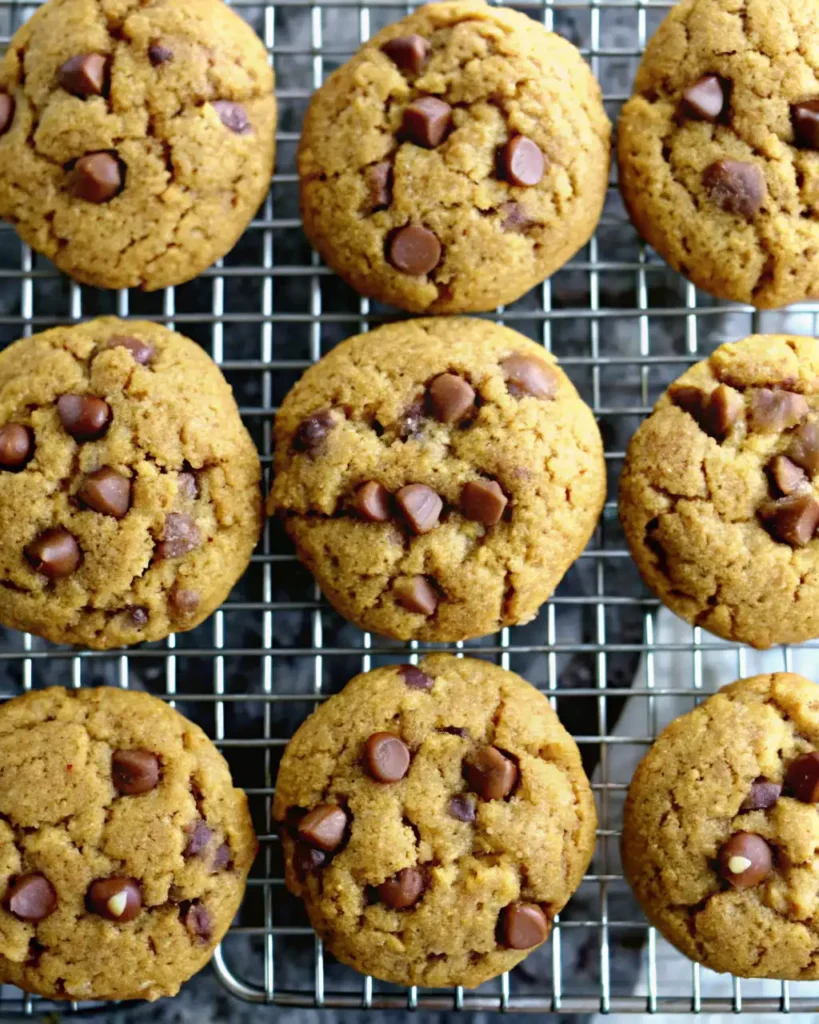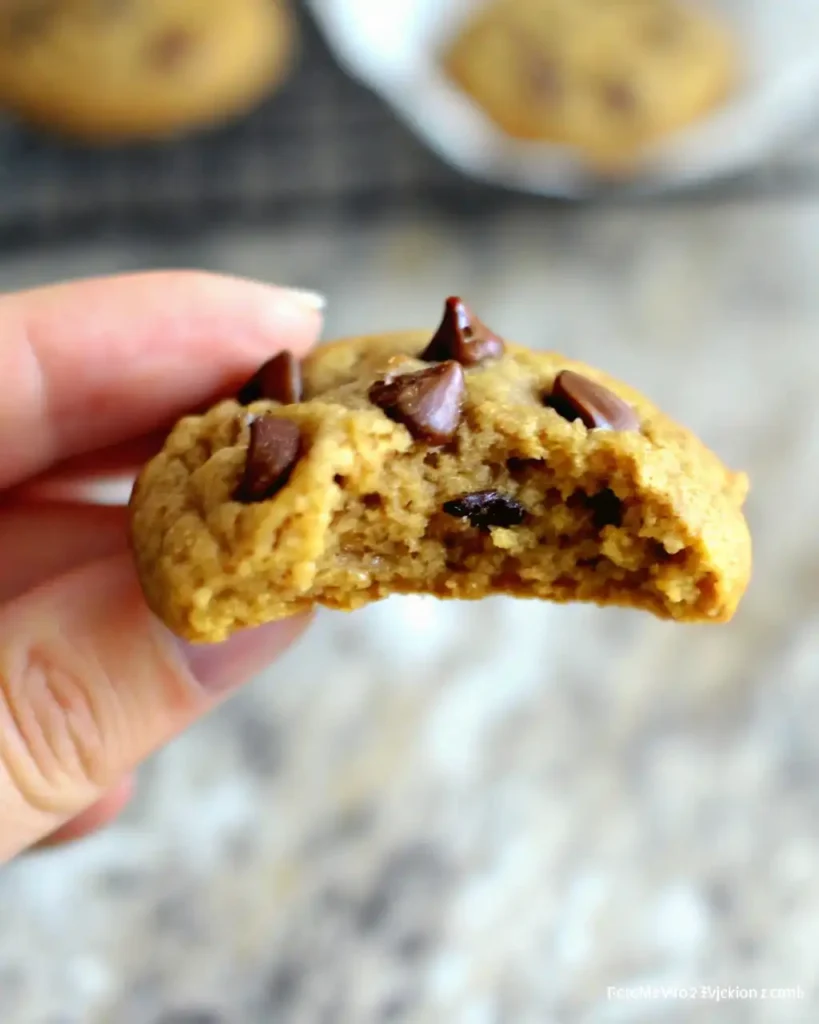Baking cookies is one of life’s simple joys. The warm, comforting smell that fills your kitchen, the satisfaction of biting into a freshly baked treat—it’s hard to beat. But if you’re exploring alternative flours, you might wonder if chickpea flour (also called garbanzo bean flour) works well for cookies. Spoiler alert: it absolutely does, and it might just surprise you!

In this detailed guide, I’ll share why chickpea flour is a fantastic option for cookies, how it works, and tips for baking with it. Plus, we’ll cover a recipe or two to get you started. So, grab your mixing bowl and let’s get to it.
What Is Chickpea Flour?
Chickpea flour is made by grinding dried chickpeas into a fine powder. It’s a staple ingredient in many cuisines worldwide, especially in South Asian and Mediterranean cooking. In the United States, it’s gaining popularity for its versatility and nutritional benefits.
Unlike regular all-purpose flour, chickpea flour is naturally gluten-free, high in protein, and rich in fiber. Its nutty flavor and unique texture make it an excellent choice for a variety of dishes, from savory pancakes to—you guessed it—cookies.
Why Consider Chickpea Flour for Baking?

Let’s break down why chickpea flour is a solid choice for baking cookies:
1. Great Texture
Chickpea flour has a naturally dense and chewy quality. This makes it ideal for cookies, especially if you love soft, fudgy ones. It holds its structure well, giving your cookies a sturdy bite without falling apart.
2. Gluten-Free Option
For anyone who avoids gluten, chickpea flour is a lifesaver. Unlike some gluten-free flours that tend to crumble or dry out, chickpea flour binds beautifully. You can enjoy cookies that are just as satisfying as the traditional ones.
3. Nutritious and Filling
Baking cookies isn’t exactly synonymous with “healthy eating,” but chickpea flour changes the game. It’s high in protein, fiber, and essential vitamins like B6 and folate. Adding it to your cookies makes them a bit more wholesome—so you can snack without guilt.
4. Unique Flavor
Chickpea flour brings a mild, earthy flavor to baked goods. While this might seem unusual at first, it pairs wonderfully with ingredients like chocolate, cinnamon, or even citrus zest. It’s like adding a secret ingredient that makes people say, “What’s in these cookies? They’re amazing!”
How Chickpea Flour Works in Cookie Recipes
Chickpea flour behaves differently than regular flour, so there are a few things to keep in mind:
1. It’s Naturally Sticky
Chickpea flour has a natural binding quality, which is why it works so well in recipes without gluten. You might find that you can use less egg or even skip xanthan gum if you’re making gluten-free cookies.
2. It Absorbs More Liquid
This flour is highly absorbent, so you may need to adjust your liquid ingredients. If your dough feels too dry, don’t panic—just add a splash of milk, water, or oil until it comes together.
3. It Browns Quickly
Cookies made with chickpea flour can brown faster than those made with all-purpose flour. Keep an eye on them while baking to avoid overcooking.
Best Types of Cookies to Make with Chickpea Flour
Chickpea flour works beautifully in a variety of cookies. Here are a few ideas to inspire you:
1. Chocolate Chip Cookies
The nutty flavor of chickpea flour pairs perfectly with melty chocolate chips. Add a sprinkle of sea salt on top for an extra layer of deliciousness.
2. Peanut Butter Cookies
Since chickpea flour has a dense texture, it complements the creamy richness of peanut butter. These cookies turn out chewy, moist, and downright addictive.
3. Spiced Cookies
Think gingerbread or snickerdoodles. Chickpea flour’s earthy undertones blend beautifully with warm spices like cinnamon, nutmeg, and ginger.
4. Lemon Shortbread
If you’re a fan of citrusy desserts, try using chickpea flour in a lemon shortbread recipe. The nutty flavor balances the tanginess of lemon for a unique and refreshing treat.
How to Bake Cookies with Chickpea Flour: Tips and Tricks

To get the best results, follow these handy tips:
1. Combine with Other Flours
While chickpea flour can stand on its own, mixing it with other flours can create a more balanced flavor and texture. For example, almond flour, oat flour, or rice flour can mellow out the earthy taste of chickpea flour.
2. Adjust Your Ratios
Since chickpea flour is denser than all-purpose flour, you might need slightly less of it in your recipe. Start with about ¾ cup chickpea flour for every 1 cup of regular flour and adjust as needed.
3. Balance the Flavor
If you’re worried about the flour’s earthy taste, pair it with bold flavors like chocolate, vanilla, or spices. These ingredients help mask any lingering bean-like flavor.
4. Don’t Overmix
Like with any flour, overmixing chickpea flour can make your cookies dense and tough. Mix just until the ingredients are combined, and you’ll have perfectly tender cookies.
5. Use Parchment Paper
Chickpea flour cookies can sometimes stick to baking sheets, so lining your tray with parchment paper is a smart move.
A Classic Chickpea Flour Chocolate Chip Cookie Recipe
Ready to bake? Here’s a tried-and-true recipe to get you started:
Ingredients:
- 1 cup chickpea flour
- ½ cup almond flour (optional, for a lighter texture)
- ½ tsp baking soda
- ¼ tsp salt
- ⅓ cup melted coconut oil or butter
- ½ cup brown sugar
- 1 egg (or a flax egg for vegan)
- 1 tsp vanilla extract
- ½ cup chocolate chips
Instructions:
- Preheat your oven to 350°F and line a baking sheet with parchment paper.
- In a bowl, mix the chickpea flour, almond flour, baking soda, and salt.
- In another bowl, whisk together the coconut oil, brown sugar, egg, and vanilla.
- Combine the wet and dry ingredients until a dough forms. Fold in the chocolate chips.
- Scoop the dough onto the prepared baking sheet, leaving space between each cookie. Flatten slightly.
- Bake for 8–10 minutes, or until the edges are golden brown.
- Let the cookies cool on the baking sheet for 5 minutes before transferring them to a wire rack.
What to Expect When Baking with Chickpea Flour
Here’s the thing: Chickpea flour is different from traditional flour, but that’s not a bad thing! Expect a slightly nutty flavor and a denser, chewier texture. While it might take a little experimenting to perfect your recipe, the results are totally worth it.
Why Chickpea Flour Is a Pantry Must-Have
Even if you’re not baking cookies all the time (though I wouldn’t blame you if you were), chickpea flour is a versatile ingredient that can be used in pancakes, flatbreads, fritters, and more. It’s affordable, healthy, and keeps well in an airtight container.
Plus, using chickpea flour in your cookies is, in fact, a simple way to make them stand out. For example, imagine serving your friends a batch of chewy chocolate chip cookies made with this unique flour—they’ll be begging for the recipe!
Chickpea Flour and Vegan Cookies
One of the coolest things about chickpea flour is how well it works in vegan cookie recipes. Thanks to its natural binding properties, chickpea flour can often replace eggs in a recipe. For example, pairing it with a flaxseed “egg” or applesauce creates a dough that holds together beautifully. Plus, it adds a little protein boost, which isn’t something you can usually say about a cookie. Vegan chocolate chip cookies made with chickpea flour are dense, satisfying, and packed with flavor—definitely worth a try.
Making Chickpea Flour Cookies Kid-Friendly
Kids can be picky, especially when it comes to anything that sounds remotely “healthy.” The good news is that chickpea flour cookies can, in fact, pass the kid test with flying colors! By using fun mix-ins like mini chocolate chips, colorful sprinkles, or even peanut butter cups, you can easily distract from any hint of the nutty flavor. Additionally, as a bonus tip, serve them warm with a glass of milk, and even the toughest critics won’t be able to resist.
Chickpea Flour for Healthier Cookie Options
If you’re looking for a way to make your cookie habit a little less indulgent, chickpea flour is a great option. It’s lower in carbs compared to traditional wheat flour and higher in protein and fiber. This combination makes it more filling, so you’re less likely to eat the whole batch in one sitting (although no judgment if you do). For a healthier twist, try sweetening your dough with honey or maple syrup instead of refined sugar, and toss in nuts or dried fruits for added texture.
Storing and Freezing Chickpea Flour Cookies
Chickpea flour cookies freeze surprisingly well, which is perfect if you want to bake ahead or enjoy a quick treat without the prep. Once baked, let the cookies cool completely, then store them in an airtight container or freezer bag. They’ll keep in the freezer for up to three months. When you’re ready to eat, just let them thaw at room temperature or pop them in a low oven for a few minutes to regain that freshly baked taste.
FAQs
What Is the Best Flour for Homemade Cookies?
The best flour depends on the type of cookie you’re making. All-purpose flour is the go-to for classic cookies, but alternatives like chickpea flour, almond flour, and oat flour work beautifully for gluten-free or nutrient-packed cookies. Chickpea flour is especially great for chewy, protein-rich cookies with a nutty undertone.
How Do You Get the Bitterness Out of Chickpea Flour?
To reduce bitterness, try lightly toasting the chickpea flour in a dry pan before using it. This step helps mellow its flavor. Pairing it with bold ingredients like chocolate, spices, or citrus can also balance the taste and make it less noticeable in the final baked product.
How Does Chickpea Flour Affect Baking?
Chickpea flour adds a slightly dense, chewy texture to baked goods, making it ideal for cookies and brownies. It also has natural binding properties, which help hold dough together, especially in gluten-free recipes. However, it absorbs more liquid than regular flour, so slight adjustments to your recipe may be needed.
Can I Use Chickpea Flour Instead of All-Purpose Flour?
Yes, but it’s best to use chickpea flour in recipes specifically designed for it or combine it with other flours. Substituting it 1:1 for all-purpose flour can sometimes lead to denser results or a more noticeable flavor, so starting with a mix (like half chickpea, half almond or oat flour) is a great option.
Final Thoughts
So, is chickpea flour good for baking cookies? Absolutely. It’s nutritious, flavorful, and adds a chewy texture that’s hard to resist. Whether you’re gluten-free, experimenting with new ingredients, or just curious, chickpea flour deserves a spot in your next cookie recipe.
Go ahead—try it out and let your oven work its magic. Your taste buds will thank you!



1 thought on “Is Chickpea Flour Good for Baking Cookies?”